ChronoThread
Inspiration and goal
Growing up with my grandmother and mother telling me bedtime stories, I naturally developed an interest in people’s life experiences. As I grew older, I became passionate about mathematics. One day in grade 10, a simple idea struck me: why not do something more interesting with math than solving problems? This inspired me to launch my project, “ChronoThread”—a metaphor for extracting useful information from seemingly unrelated events in individuals’ stories.
After transferring to the international department in grade 11, I had more free time to further develop the project. Also, with knowledge gained from mathematical modeling contests, I was able to further refine it. By creating this webpage, I wish to present my work to more people, providing a rational framework for individuals to gain deeper insights into their own lives.
How did i do it?
Data Collection:
Since the project is closely related to mathematics, I began by first studying the life stories of mathematicians, using resources like Wikipedia, Britannica, and their biographies.
With some experiences gained, I branched out my efforts to living figures. I interviewed some of my friends and collected their life experiences. Also, I participated in the “18 and Life” seminar to compile even more stories.
Data Exploration:
Based on the stories, I identified some common themes and then concluded several universal dimensions to assess individuals’ overall performance at various stages of their lives.
Data Cleaning and Transformation:
I categorized events from individuals’ stories into these dimensions, and then shared them with my family and friends, asking them to score each dimension independently. By combining their scores and my own insights, I was able to quantify each dimension for each phase in people’s lives on a scale of 1-10.
In this way, the process of quantification itself reflects each person’s unique values and moralities, which, in turn, better reveals the differences between people and helps foster deeper understanding.
Data Visualization and Interpretation:
Ultimately, I visualized these scores on radar maps, enabling each person to have their own unique life map.
I connected my friends together offline, enabling them to share and compare their graphs with one another. It was through this collaborative experience that I was truly able to fulfill the meaning of CHRONOTHREAD.
Below are some pictures taken during our offline shares.


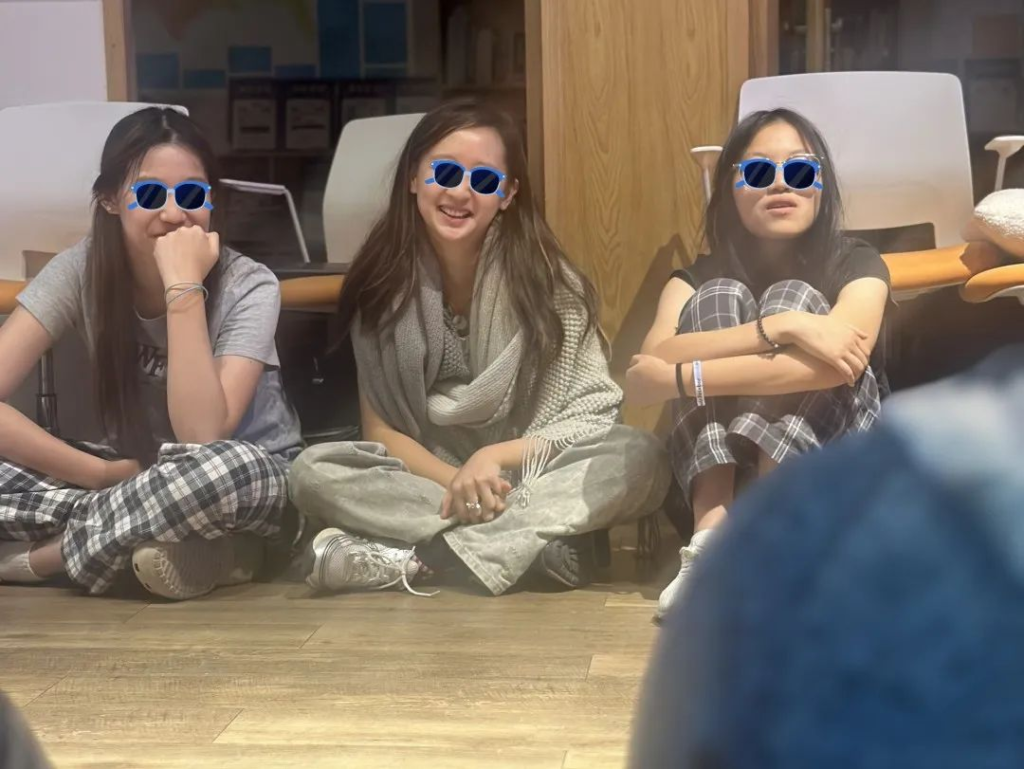

Output
So far, I’ve created radar maps for 15 people—5 mathematicians and 10 friends, including myself—resulting in 60 graphs that include timelines, classifications, scores, and unique life maps.
60
GRAPHS
5
MATHEMATICIANS
10
FRIENDS (myself included)
mathematicians
The 5 DIMENSIONS
Material Level (ML)
Refers to the overall level of material resources and wealth owned and at the disposal of a person at a given period of time.
Mental and Physical Health (MPH)
Refers to a person's overall state of health in physical and mental dimensions. In this model, the quantification of MPH is done by taking the average of mental (M) and physical (P) health levels.
Interpersonal Relationship (IR)
Refers to a relationship between two or more individuals that is formed through behaviors such as communication, interaction and cooperation. In this model, such relationships are mainly based on family and romance.
Professional Achievement (PA)
Refers to a person's achievements and successes in his or her area of expertise (overall achievement if the person is recognized to have multiple professions).
Social Impact (SI)
Refers to the various effects that a person has on society through his/her actions, statements, etc.
My mathematical interest has prompted me to start my project with famous mathematicians.
I made an effort to balance the diversity of mathematical branches that are covered by the mathematicians selected as well as the importance of their contributions (PS: the order of appearance is according to alphabetical order).

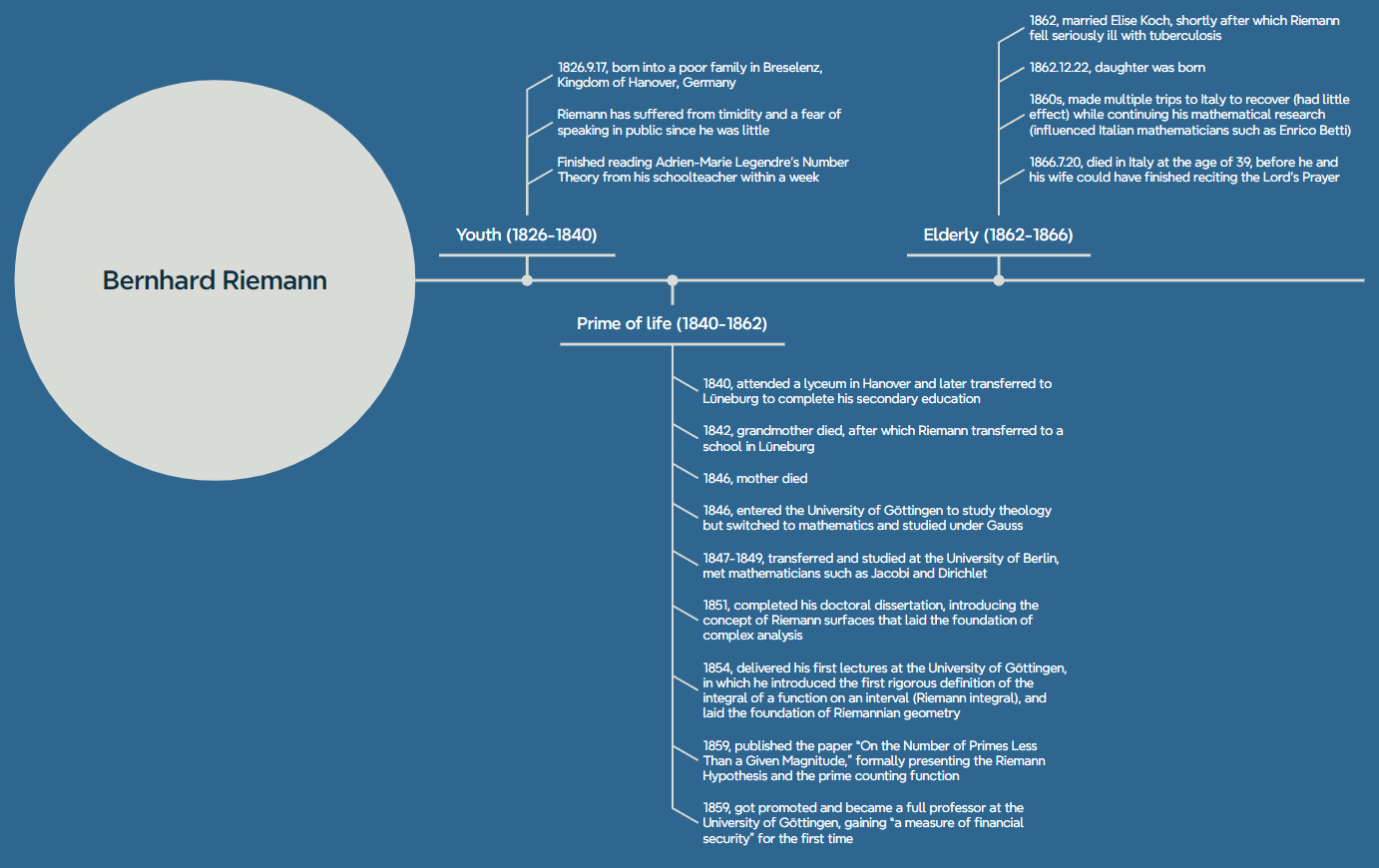
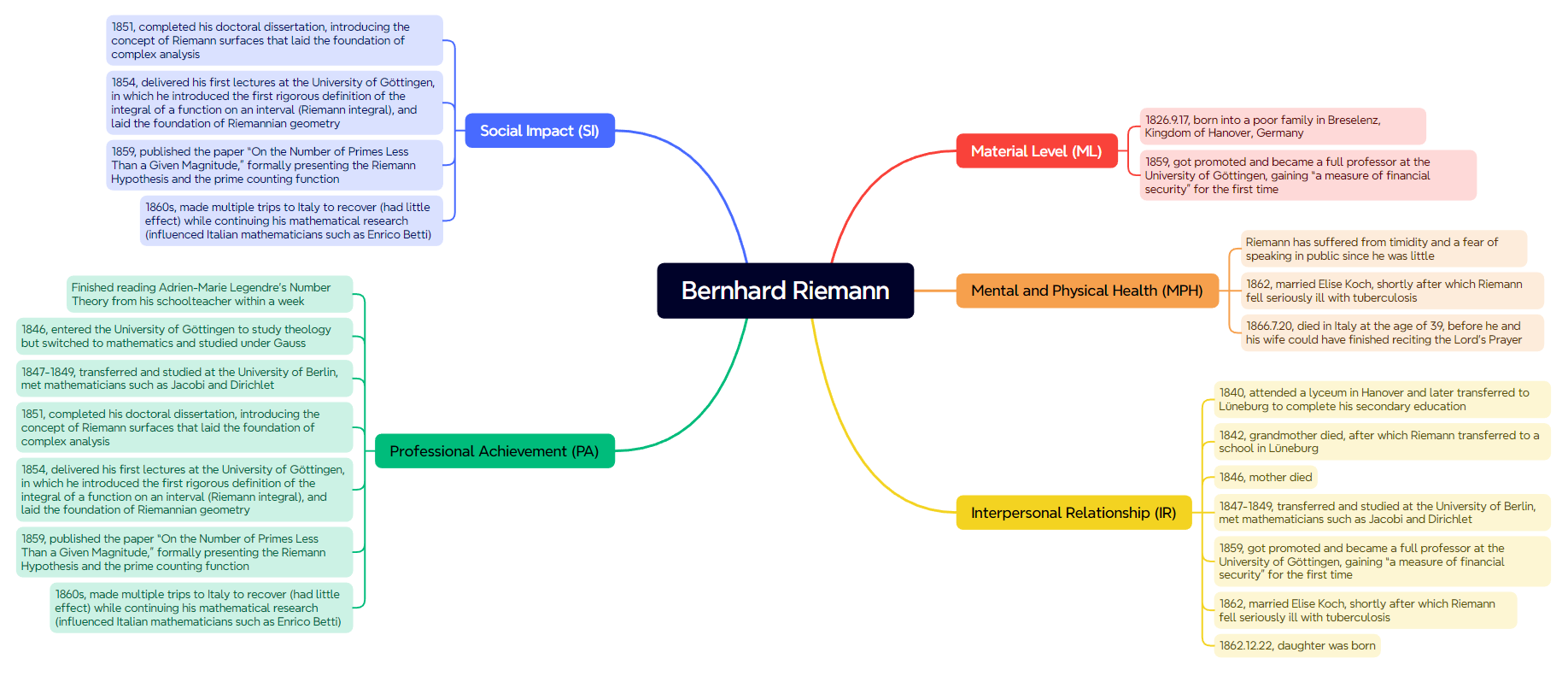

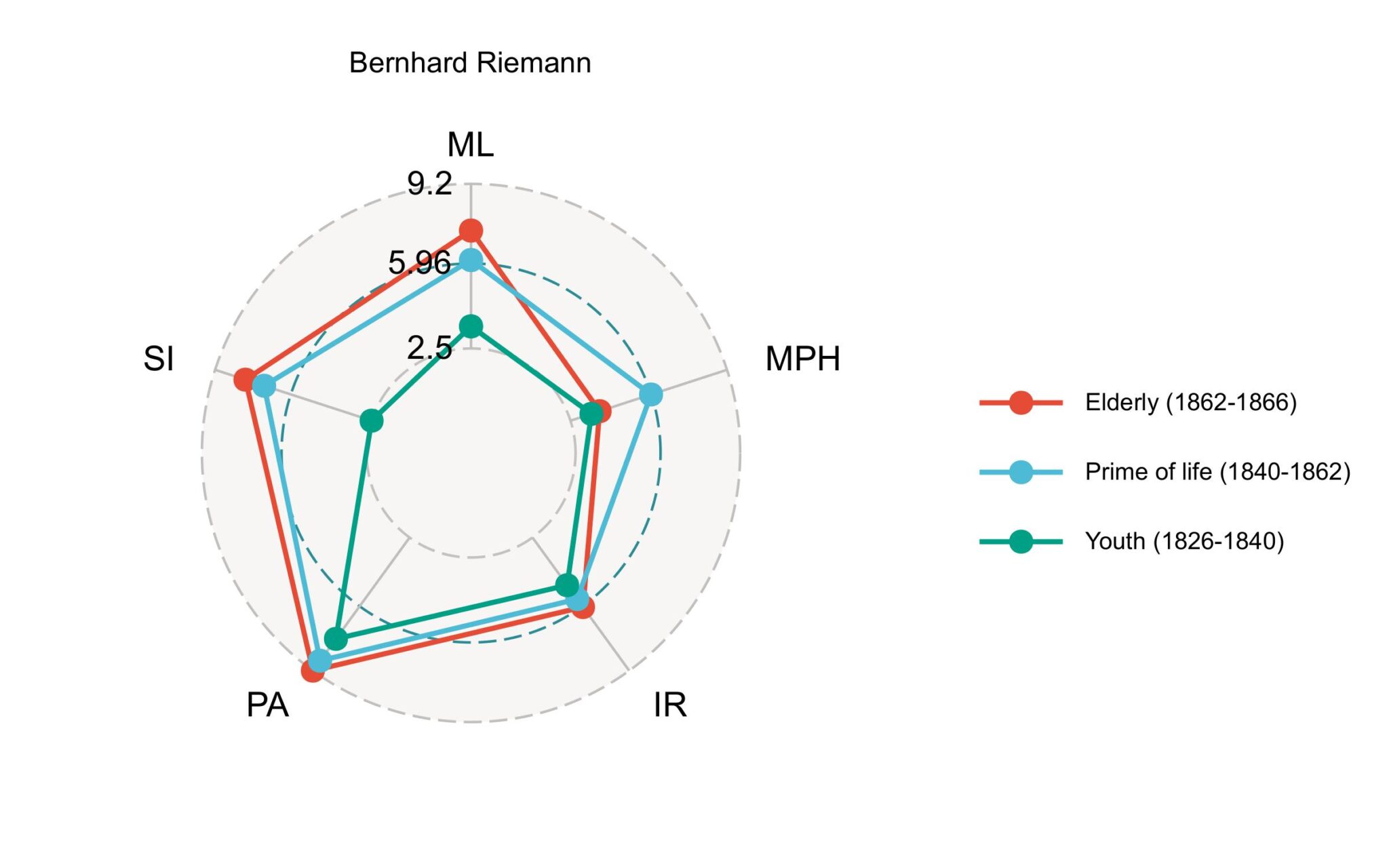
Bernhard Riemann
Bernhard Riemann (1826–1866) was a German mathematician known for his contributions to analysis, differential geometry, and number theory. His famous Riemann Hypothesis still remains one of the most significant unsolved problems in mathematics now.
Bertrand Russell
Bertrand Russell (1872–1970) was a British philosopher, logician, and social critic. He made foundational contributions to mathematical logic and analytic philosophy, co-authoring “Principia Mathematica” with Alfred North Whitehead.
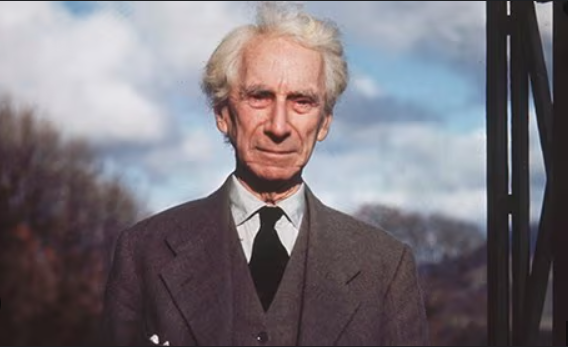
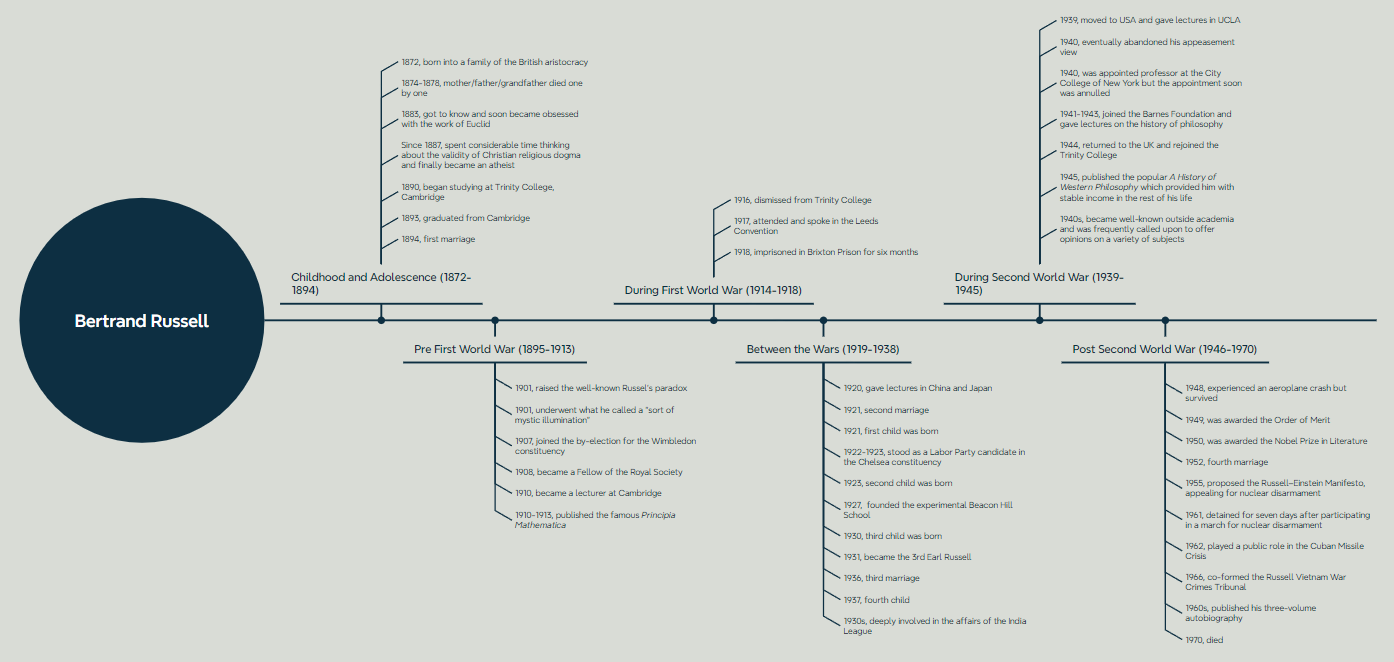
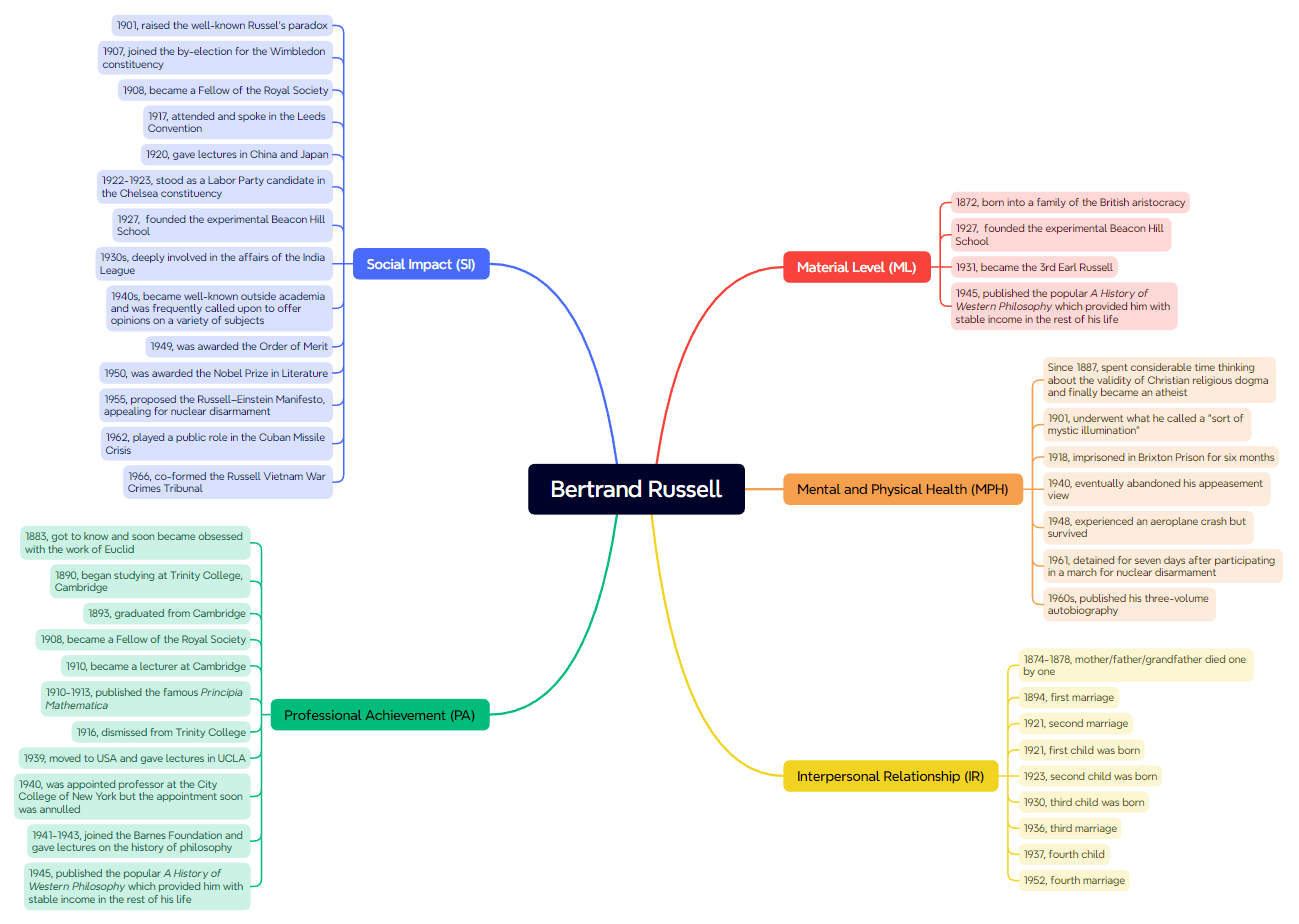



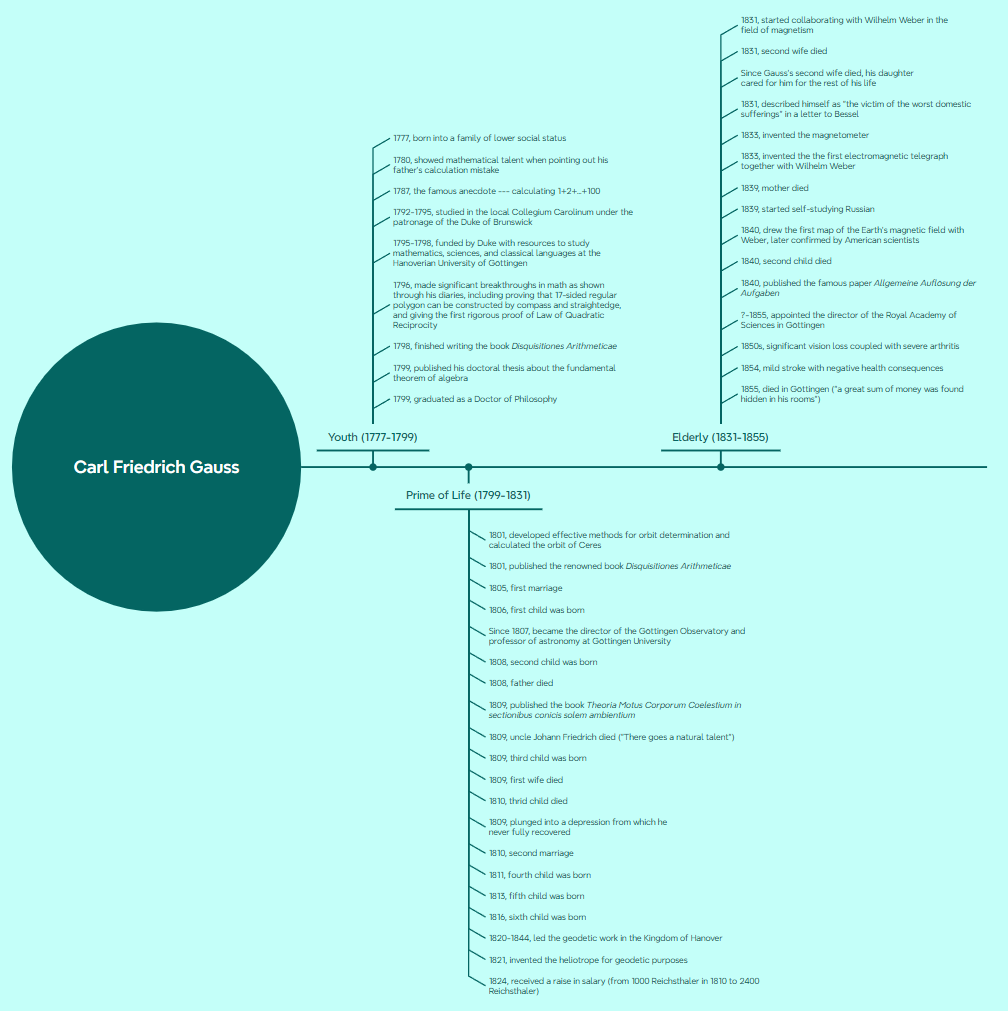
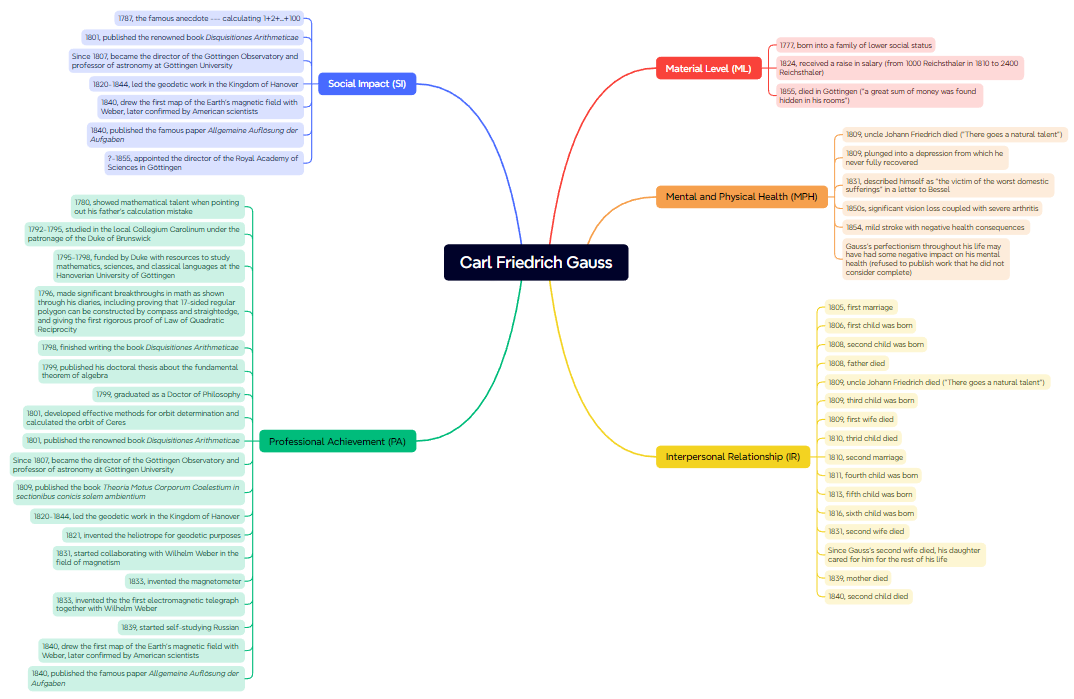

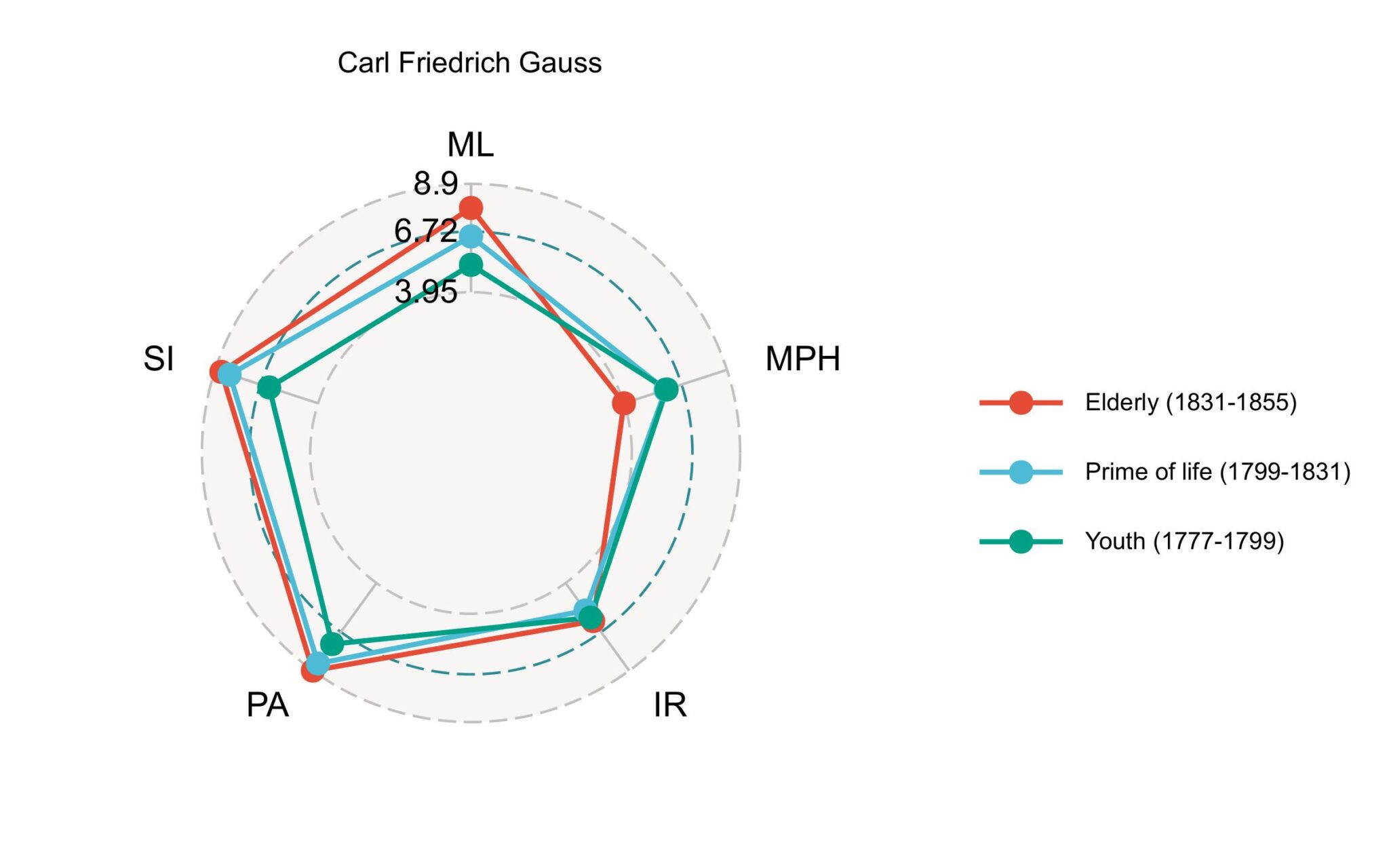
Carl Friedrich Gauss
Carl Friedrich Gauss (1777–1855) was a German mathematician, astronomer and physicist who was famous for his contributions in various fields like number theory and statistics. His landmark work, Disquisitiones Arithmeticae, laid the foundation for modern number theory.
Leonhard Euler
Leonhard Euler (1707–1783) was a Swiss mathematician, physicist, astronomer, geographer, logician, and engineer who founded the studies of graph theory and topology. He was a pioneer in various fields such as analytic number theory, complex analysis, and infinitesimal calculus. He also introduced much of modern mathematical terminology and notation.

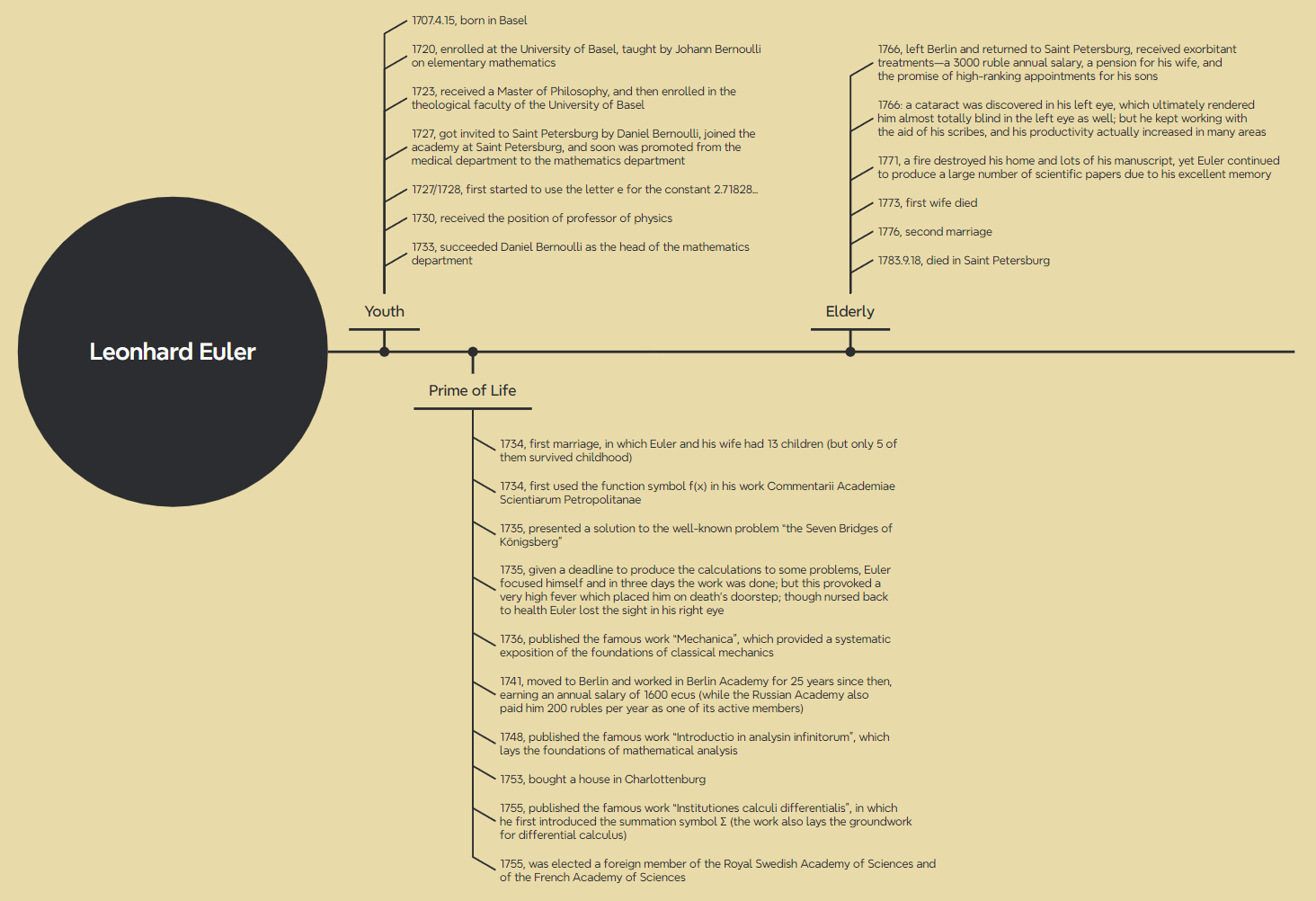
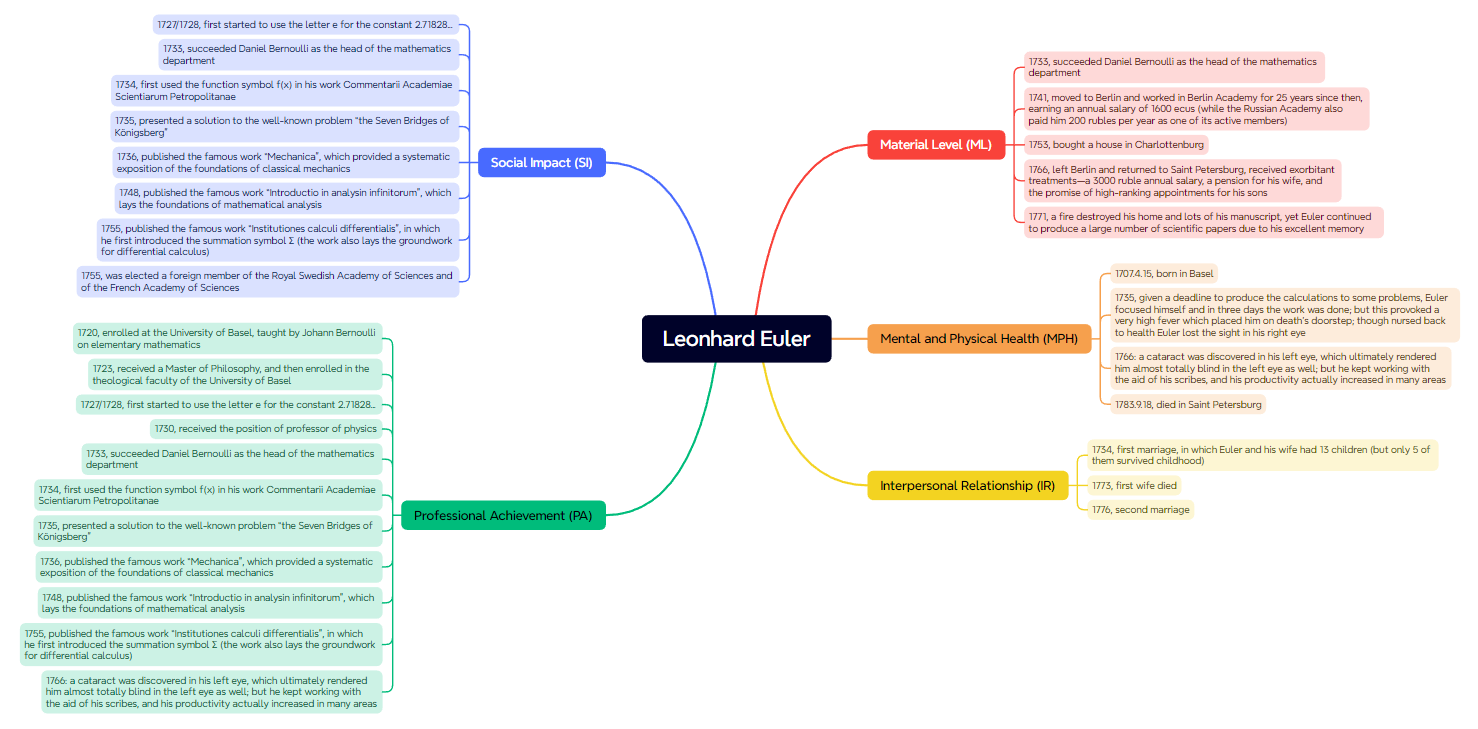

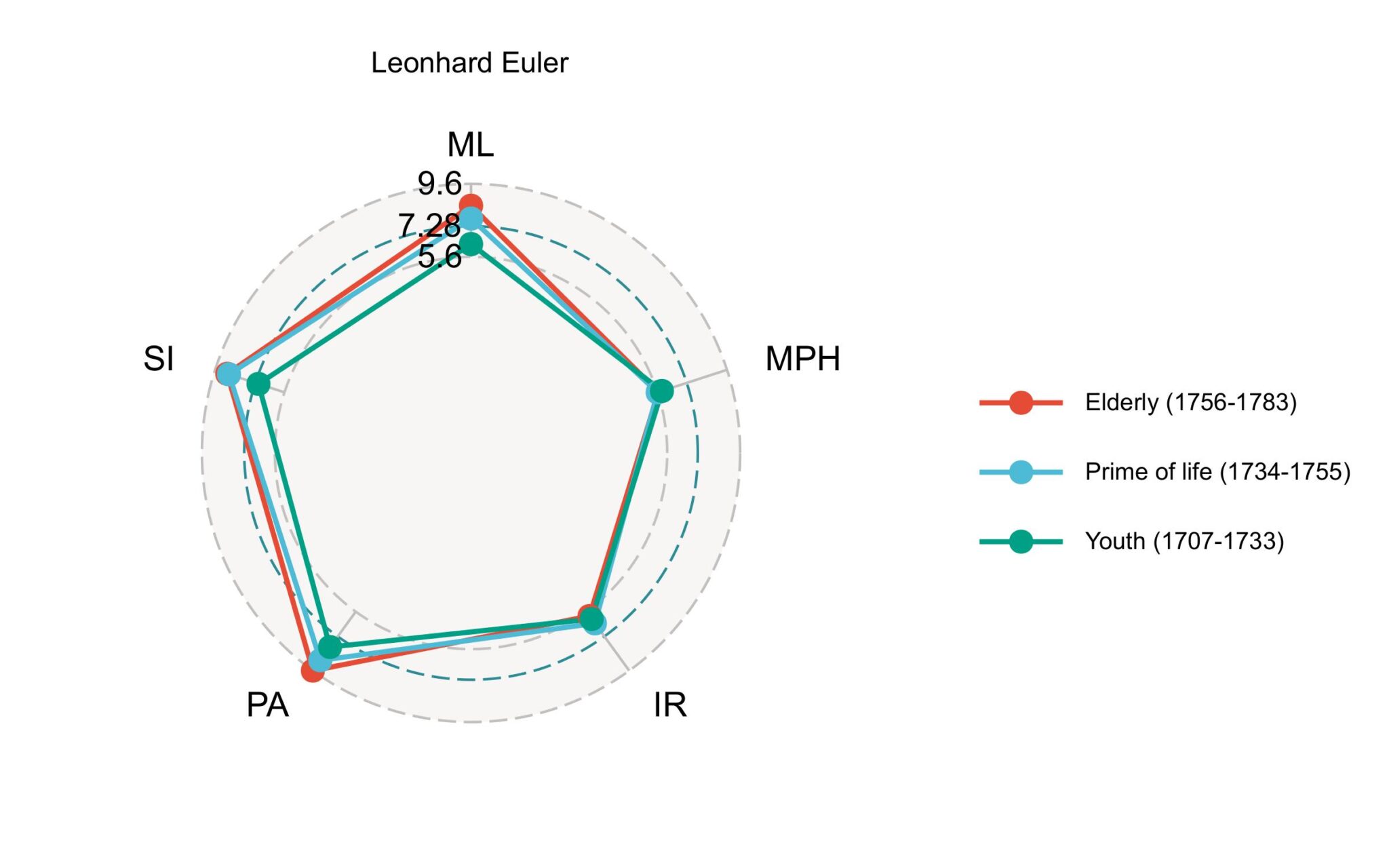
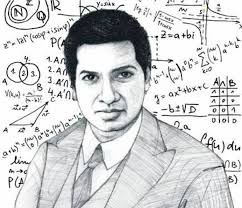
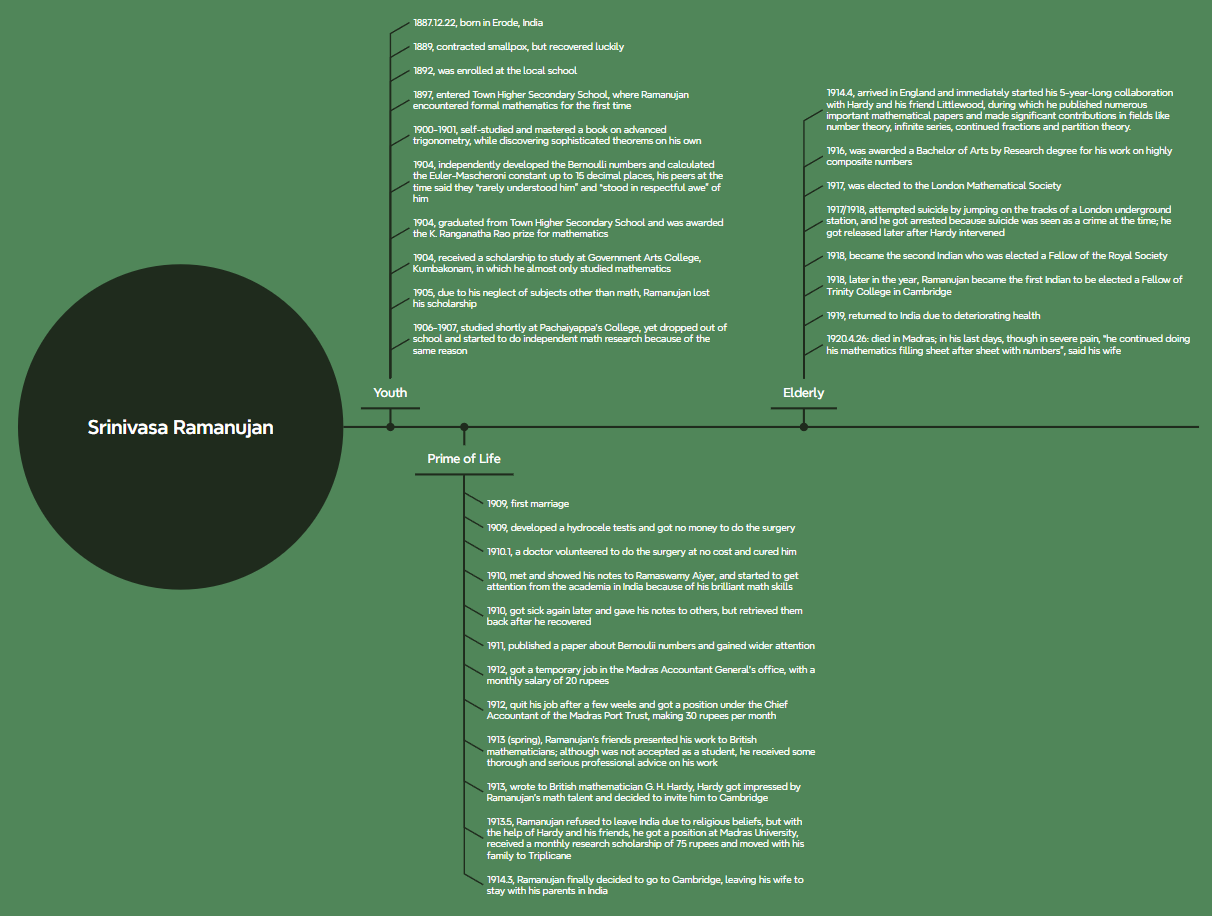
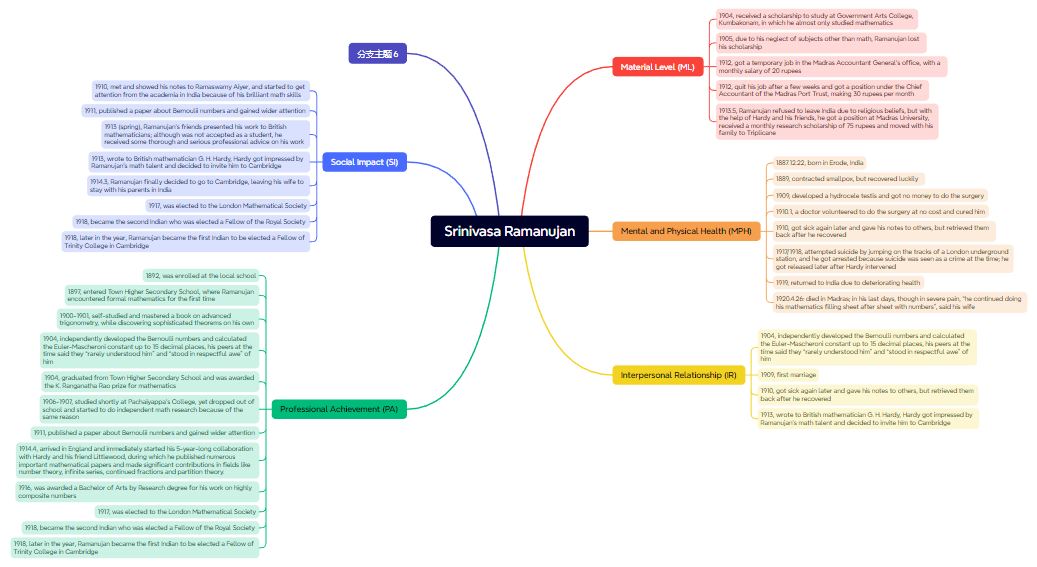

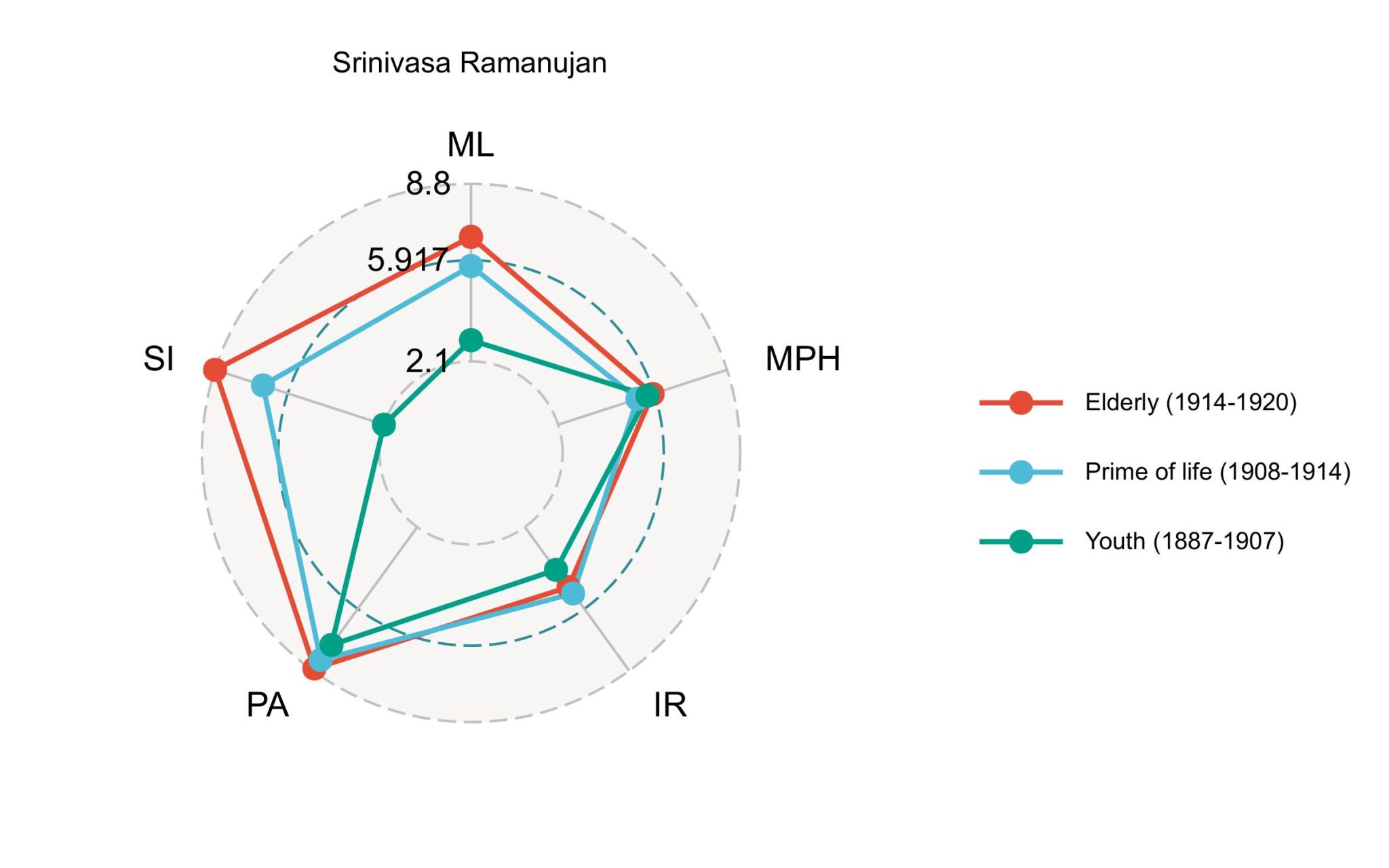
Srinivasa Ramanujan
Srinivasa Ramanujan (1887–1920) was an Indian mathematician. Though he had almost no formal training in pure mathematics, he developed his math instincts in isolation. He made substantial contributions to mathematical analysis, number theory, infinite series, and continued fractions, including solutions to mathematical problems then considered unsolvable.
Friends
I further extended my project to those around me. With stories of 6 girls and 3 boys collected (plus myself), I was able to visualize their experiences as well. Notably, I made some modifications to the dimensions as shown below.
Mental and Physical Health (MPH)
Refers to a person's overall state of health in physical and mental dimensions. In this model, the quantification of MPH is done by taking the average of mental (M) and physical (P) health levels.
Interpersonal Relationship (IR)
Refers to a relationship between two or more individuals that is formed through behaviors such as communication, interaction and cooperation. In this model, such relationships are mainly based on family and friends.
Academic/Hobby Achievement (AHA)
Refers to a person's achievements and successes in his or her area of expertise (especially academic and hobbies that have persevered for over a year).
Community Impact (CI)
Refers to the various impacts that a person has on community through his/her actions, statements, etc.
However, due to privacy concerns, I prefer not to display all of them here. Below is the graph I drew for myself, coupled with those of two of the girls’ (permission granted by the girls).

Gabriel Yang
👆 is me, a 17-year-old boy from Guangzhou, China.
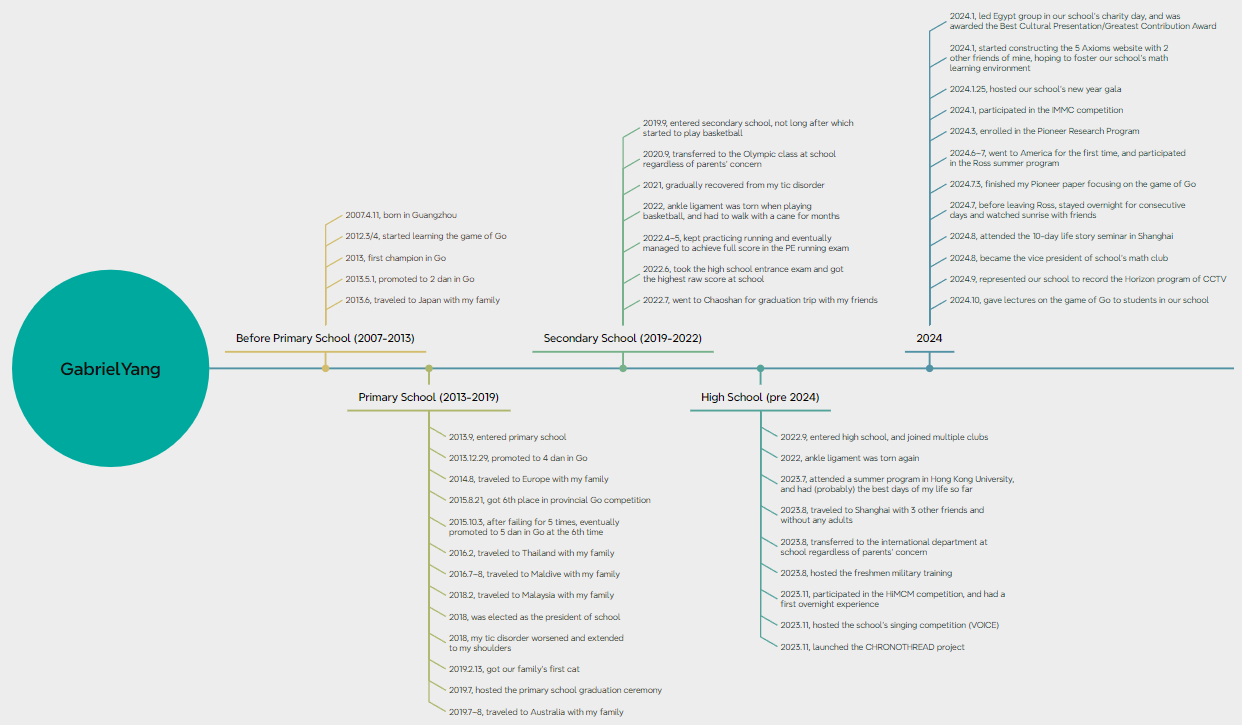
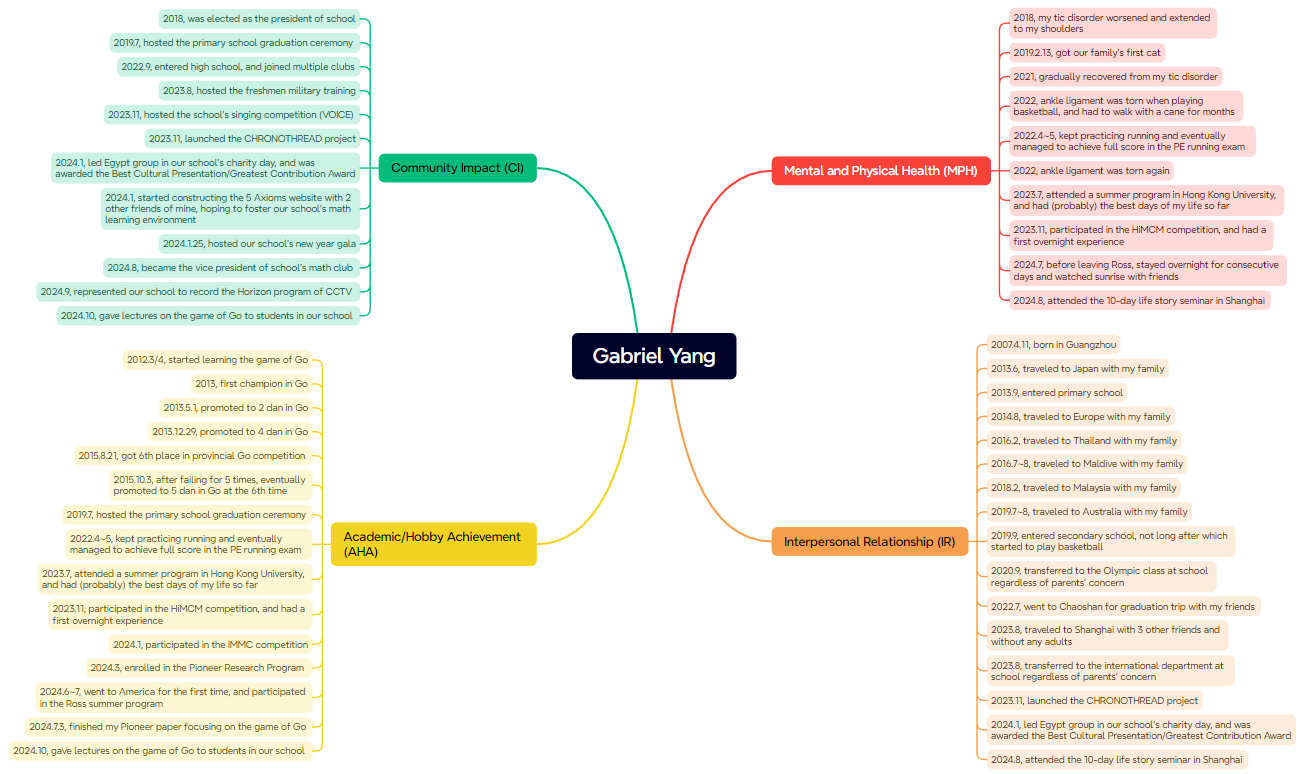



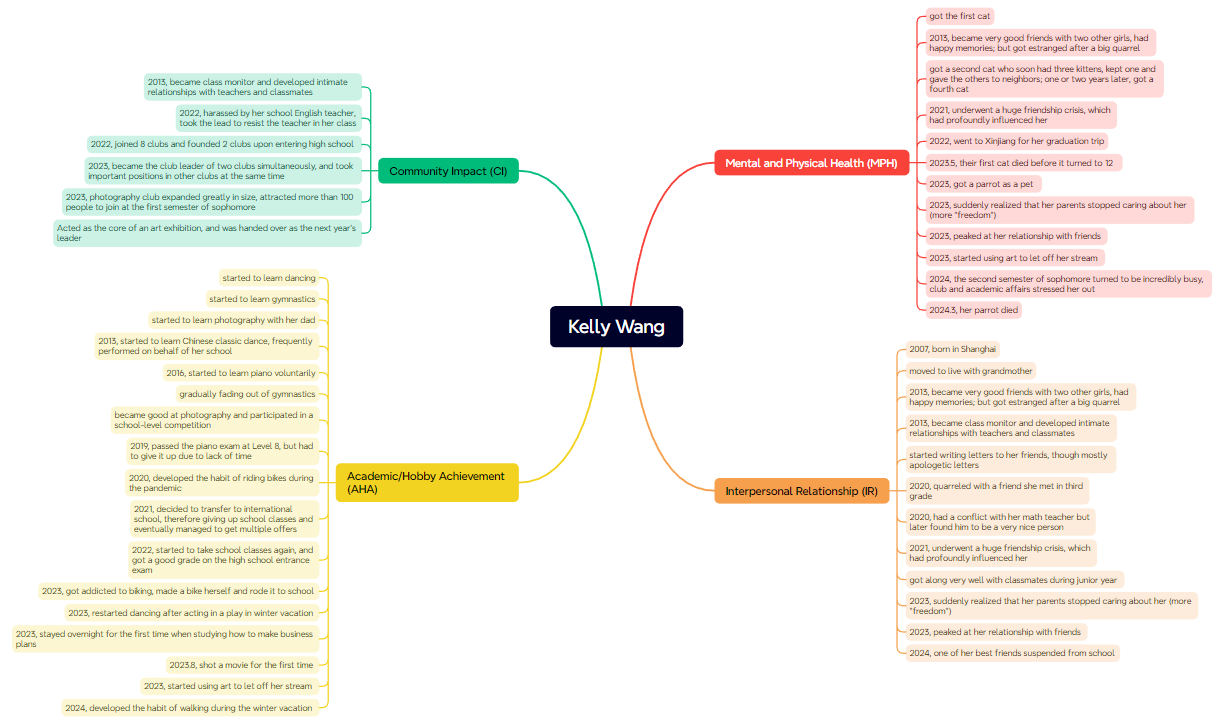

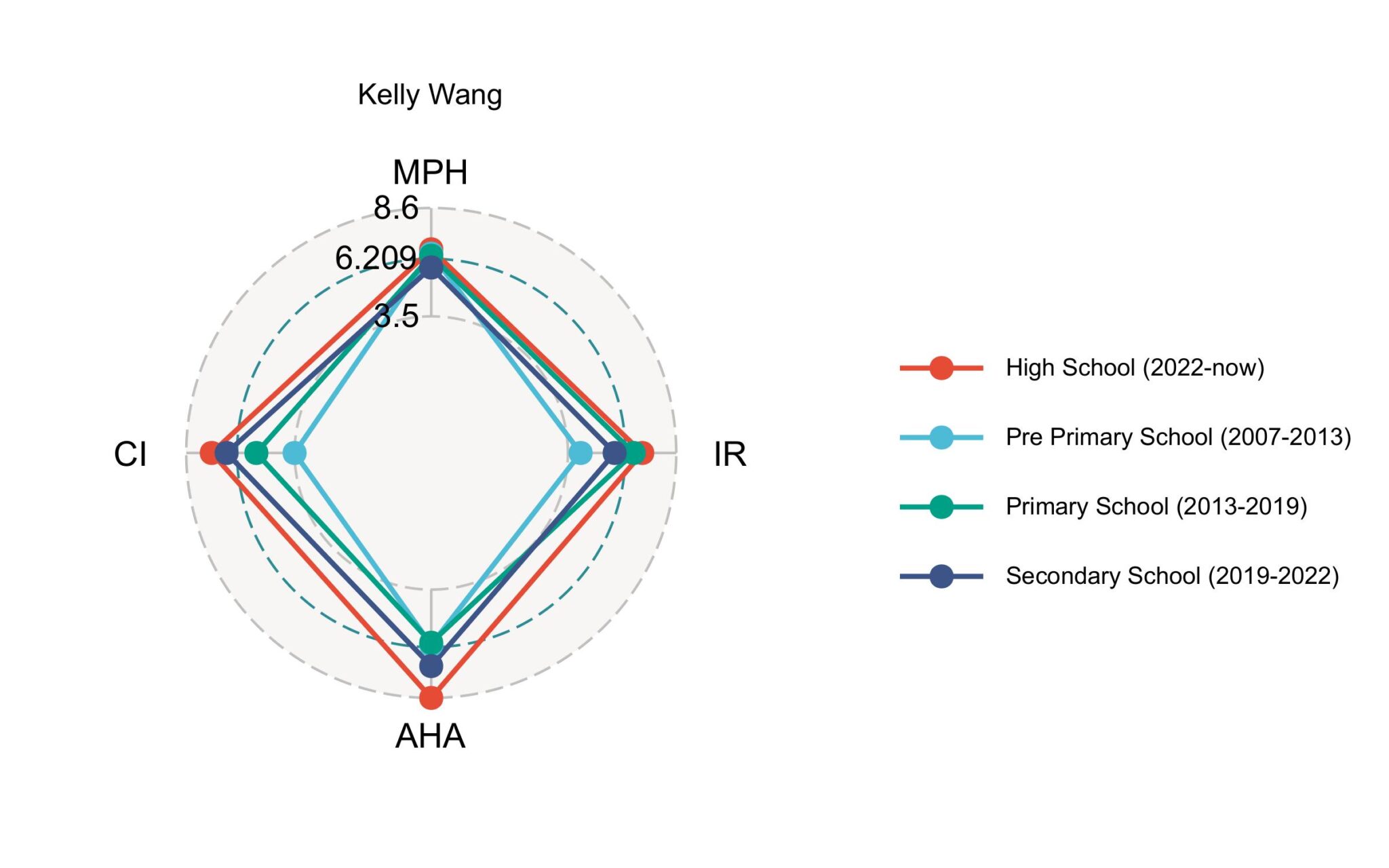
Kelly Wang
👈 are the stories of Kelly Wang, a 17-year-old girl from Shanghai, China.
Olivia Chen
👉 are stories of Olivia Chen, who is also a 17-year-old girl from Shanghai, China.
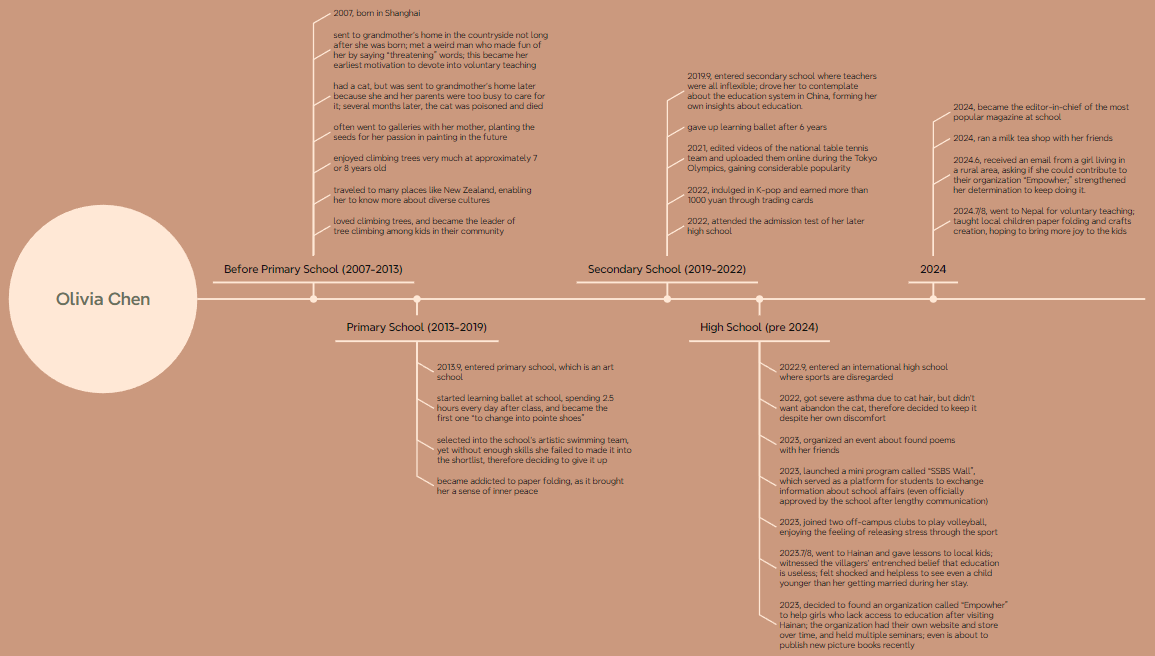
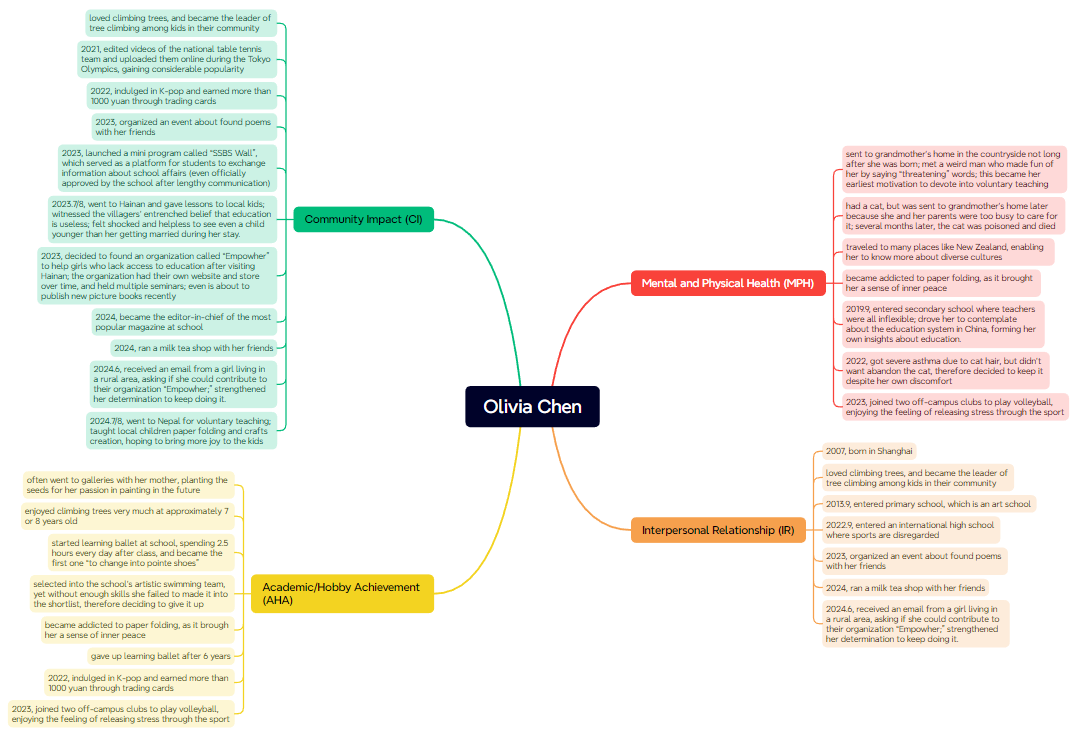
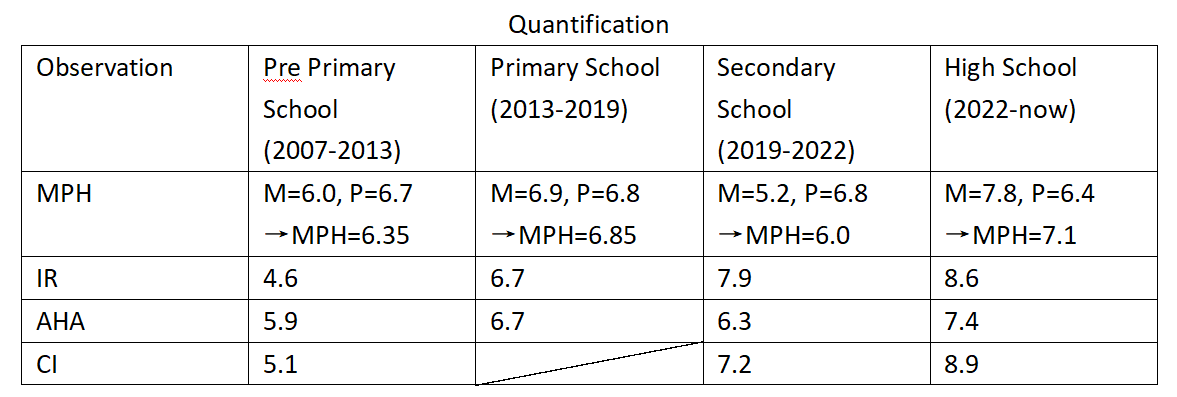
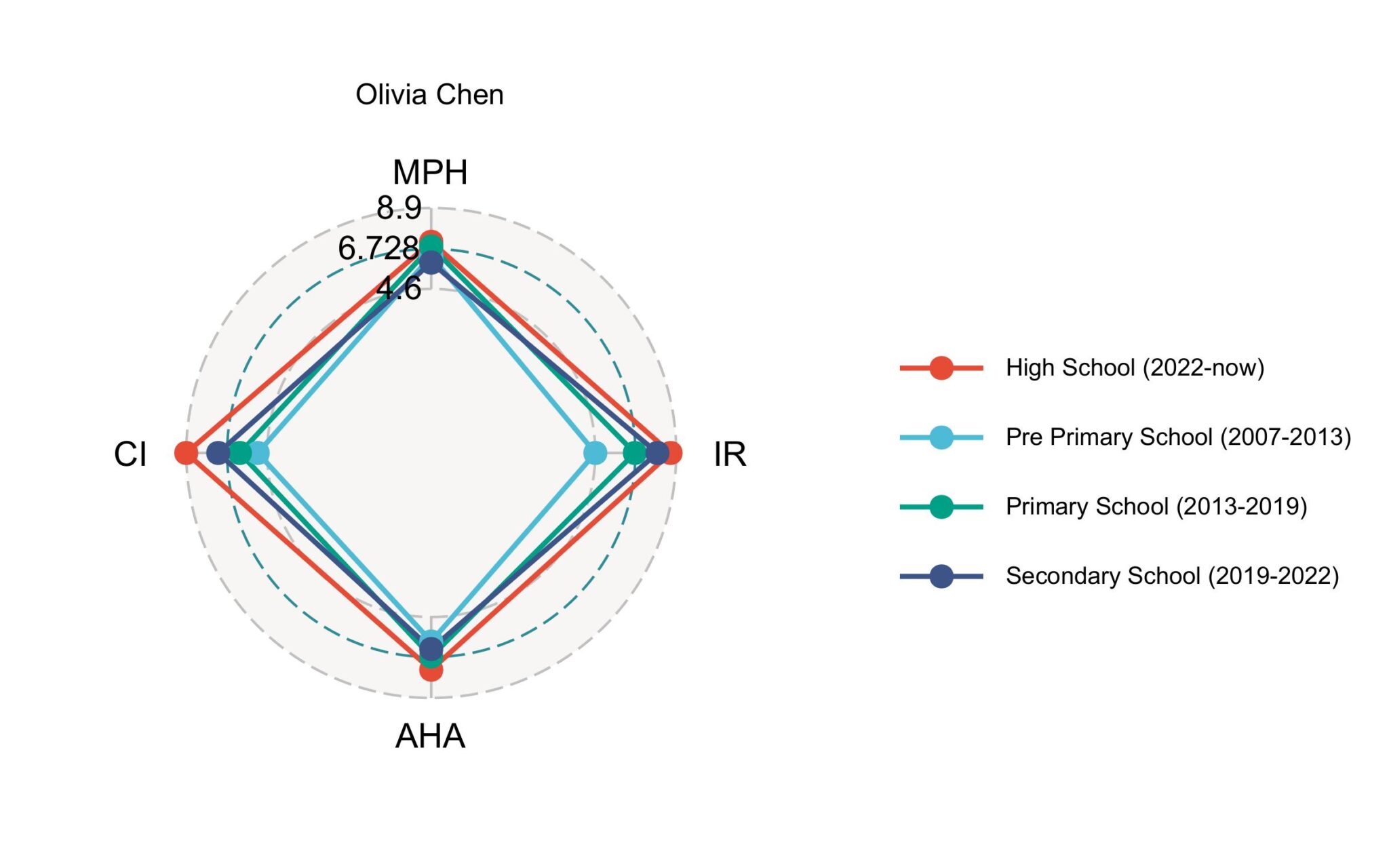
Qualifications
Admittedly, there have been several qualifications regarding my project so far. This stems partly from my limited knowledge of mathematical modeling and data visualization, as well as the subjectivity and inaccuracies in my attempts to record and evaluate various life stories. Below are some shortcomings I’ve identified while doing “CHRONOTHREAD”:
- The samples used may not be sufficiently representative, which limits the generalizability of the established dimensions.
- There may be more effective methods to divide people’s lives into distinct phases.
- The classification of events may not be mutually exclusive, as some events are multifaceted and could cover multiple dimensions.
- The quantification process may result in information loss.
- The quantification may lack objectivity, given that many subjects are my friends, and my daily impressions on them could introduce bias in my ratings.
- There may be better visualization methods to facilitate comparisons among different individuals’ quantifications.
Overall, I hope that further studies in college will enable me to expand the scope and refine “CHRONOTHREAD.”
Want to Share Your Stories?
Contact me via zhanpengy0@gmail.com !!!